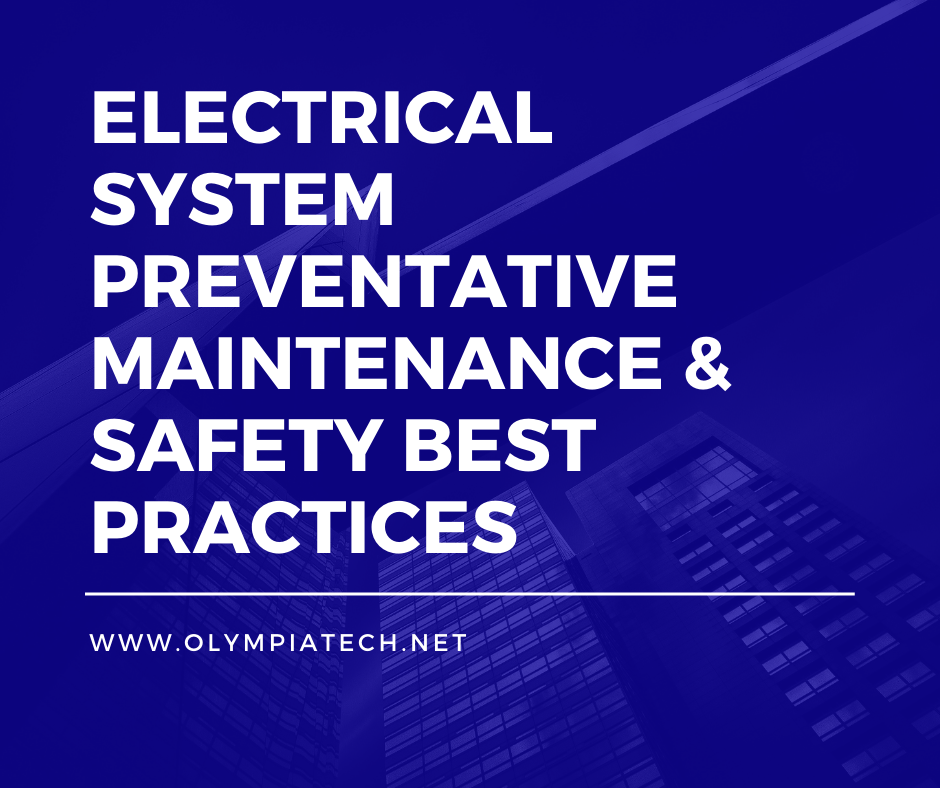
With the start of the new year, property owners and managers are preparing for their 2021 projects and improvement programs – including preventative maintenance for building systems. Preventative maintenance of critical building equipment can help identify and correct issues before they become major problems. These proactive actions will help ensure that electrical systems are performing at optimal levels and reduce the chances of costly downtime. Now is also a great time to review safety best practices to ensure your facility is operating safely, in compliance, and up to code.
To help you with your planning, we have compiled a checklist of safety best practices and considerations for electrical building maintenance.
Lighting & Controls
- Visual inspection of interior, exterior, and site lighting.
- Clean fixtures annually. A fixture’s output can diminish by 10% a year just from dust accumulation, even in a relatively clean environment.
- Check dimming pre-sets periodically. This step can help verify they meet original performance requirements.
- Check scene pre-sets to assure they meet original requirements. Dimming systems have pre-sets that, once set, rarely need changing. If that is the case, locking them either mechanically or electronically will prevent system problems.
- Ensure all ballasts have a published ballast factor.
- Ensure your replacement stock of lamps and ballasts are adequate and stored in a dry place.
Electrical Drawings
- Update electrical drawings / one-line diagram.
- Laminate a riser diagram to have on hand.
Infrared Scanning
- Annual infrared scanning of energized electrical systems.
- Switchgear, busway, panelboards, disconnect switches, generator equipment, and UPS systems should all be scanned.
Switchgear, Transformers, Panelboards, and UPS systems
- Arc Flash studies are up to date and all required tags are installed on equipment.
- A cleaning and visual inspection of all components.
- Transformer testing – including oil sampling for primary transformers.
- Breaker testing.
- 100% UPS load and battery testing and maintenance.
- Spare fuses are on hand.
- Update panel schedules, if needed.
- Ensure panels are properly locked.
- Get replacement panel keys made, if needed.
Bus Duct Testing
- Visual inspections.
- Infrared scanning.
- Torquing of all bus duct connections.
- Megger testing of all bussing.
- Contact resistance testing.
Life Safety
- Verify functionality of all emergency lighting systems.
- Manually test all batteries.
- Visually test all emergency lighting.
- Fire alarm testing per NFPA-72.
- Visual inspections of fire alarm.
- Waterflow, tamper, battery tests.
- Complete fire alarm systems testing.
Generator Testing
- Testing per NFPA 110.
- 30-minute testing including ATS testing.
- Load bank testing.
- Fuel sampling and testing by ISO-certified laboratory.
- Scheduled maintenance by factory-authorized representative.
- Infrared scanning of all connections (annually).
- Modernization and retrofitting (as necessary).
Power Quality Metering
- Identify loads on switchgear, panelboards, emergency systems, etc.
- Monitoring and logging system performance.
- Identifying specific problems within the electrical system.

